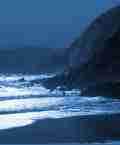John Caldwell
Pure Genius, Pure Class, Unsurpassed!
[from the Appletree Press title Legends of Irish Boxing published by Appletree Press]
In the opening round of the flyweight division, Caldwell was afforded a bye. His first opponent, Yai Shwe of Burma, fell victim to John’s unique style of working inside with quick punches and then switching his attacks from body to head. Yai Shwe was duly knocked out in the third round.
In the quarterfinal, Caldwell upset the legions of local Melbourne fans when he beat their local hero, Warren Batchelor, on points. The Australian had been the favourite to win the division and Caldwell’s success put him in pole position for the gold medal.
However, it was not to be as, in the semi-final Caldwell lost out to the crack Romanian Mircea Dobrescu and had to content himself with a bronze medal. The Romanian, in turn, lost out to the legendary British fighter Terry Spinks in the final and he claimed the gold medal.
Whilst Ronnie Delaney had crowned the Irish squad’s achievement with a gold medal in the 1500 metres, the boxing squad’s achievements represented the greatest display from any set of pugilists ever to have worn the green vest at the Olympics.
On their return, the team were held in the greatest esteem as rapturous receptions were followed by numerous civic ceremonies across the country. John Caldwell was feted in Dublin, Belfast and most warmly in his own Cyprus Street as an all-conquering hero. He recalled the experience with pride.
“The whole of Cyprus Street and most of the Falls Road was out to cheer me on my return to Belfast. When I recall the feeling I had inside and I just think of standing there on that podium in Melbourne with my medal it just makes me so proud,” said John. “It was a dream come true for me and sometimes I have to pinch myself and question whether it really happened.”
With the Melbourne Olympics behind him, John continued
with his amateur career and found himself a trade as a pipe
fitter. He was now operating at the top of the game and with the
experience of winning an Olympic medal so young he saw his
career in boxing moving towards a different sphere. Naturally,
the calling to the paid ranks was not far off and in January 1958,
he fought his last unpaid fight in Belfast’s St Mary’s Hall.
It is said that there was an audible gasp among the crowd in
the Bank Street venue that night when it was announced from the
ring that Caldwell had worn a vest for the last time. As a boxer,
he was cherished in his hometown. Given the fact that he had
now turned professional – and given John’s talent and the state
of professional boxing in the City at the time – the prospect of
spectators seeing Caldwell fight out of Belfast became a distant
hope.
Family life and John’s career soon coincided. John married
his childhood sweetheart Bridget and made the decision to start
his career in the paid ranks and base his family in Scotland.
Glasgow was to be the base from where Caldwell, under the
management of Sammy Docherty, set out on a new era.
The 1950s were an era when professional boxing was
flourishing in Britain, and Caldwell’s professional career was soon
underway. In his first bout, a two-round stoppage of Englishman
Billy Downer signalled the start of John’s rise through the ranks.
As he recalled, the training regime he followed required discipline,
self-control and dedication.
“In Glasgow, I attended mass at half-six every morning.
After that, I would take to the hills outside the city for the running
and stamina training. I had to watch my diet and keep myself
right that it was really tough going. My exercise routines were
so varied and beneficial that the then Glasgow Celtic manager
Jimmy McGrory asked me to go along and help the team out.
I showed the players the range of exercises that I did to get fit
and we all became very friendly. As a lover of football, I jumped
at the chance of mixing with the Celtic players and remember
playing in many practice matches with them. The one thing I
remember about those training games is that none of the Celtic
players were allowed to tackle me as I was in training for fights,
so it was a strange experience to be able to run rings around
them. Without exaggeration, I can say that I was supremely
fit at the time but it took real discipline and an awful lot out of me both physically and mentally. My trainer at the time knew
me inside out and he could tell exactly what stage I was at
and how I was shaping up in the run up to a bout. He always
cautioned me against being overly fit and he sensed just by my
mood when I had reached perfect fitness; after that it was a
case of no more physical work as he was sure I was ready.”
The previous part of John Caldwell's story can be read here:
part 1 |
Read the next part of John Caldwell's story here:
part 3 |
From the Appletree Press title: Legends of Irish Boxing by Barry Flynn.



